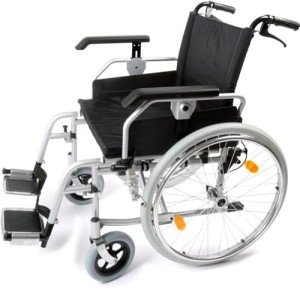Additional Wide Bariatric Wheelchair With 24" Seat
Frame
Wheelchairs are generally made in a standard width of 16" (narrow adult), 18" (basic adult) or 20" (wide adult). Nevertheless, some wheelchair users need a seat width wider than these standards. These extra large bariatric wheelchairs are usually fitted by an expert and based upon the user's measurements.

In bariatric living aids to get the most comfortable and secure ride for passengers, it is necessary that wheelchairs are correctly sized. This suggests that the wheelchair should be able to accommodate the user's size while being able to maneuver in tight spaces. This is why BriteLift provides tailored vehicles to transport wheelchair guests. This consists of vans that can securely drive and maneuver large wheelchairs, allowing them to feel safe and comfortable in every trip. visit the up coming article is the only way to offer the most reliable transport for wheelchair travelers.
Seat
Bariatric wheelchairs are bigger than standard wheelchairs and are developed to accommodate individuals who are much heavier or broader. This extra large bariatric wheelchair from Medline includes a 24" seat and a carbon steel frame with rust- and chip-resistant chrome plating. The wheelchair has tool-free push-button adjustable footrests and easy-to-clean vinyl upholstery. It can support as much as 500 pounds.
When picking the ideal wheelchair width, it is necessary to determine the user sitting typically on a flat surface area across their best part of the lap which is normally their hips. It is also suggested that you use a yardstick instead of a measuring tape as it tends to provide a more accurate measurement. If the user will be wearing a winter season coat then an extra 2" need to be added to the measurement of their seat width.
simply click the up coming website page is usually bigger and heavier than standard wheelchairs. This is why they require more careful maneuvering. Motorists need to be trained in managing these passengers. Furthermore, lorries require to have adequate room for these chairs along with ramps and wheelchair lifts. In addition, they require to understand how to schedule these trips beforehand.
When deciding on the chair width, it is very important to measure the user's widest point in the seat, which is typically the hips. Many wheelchair manufacturers also offer a yardstick that can be used to assist with this measurement. When determining a person's width, it is best to take the measurement directly throughout and not cover the tape around their hips which can provide a false reading.
In some cases, the largest part of an individual's thighs may be larger than their hips so this ought to be taken into account when picking the chair width. In these instances, it is in some cases required to add an extra 2" to the chair width.
In general, the weight capacity of a bariatric wheelchair must not be gone beyond under any situations or serious injury may result. When utilizing the chair, always be sure that it is on a steady and level surface area with front casters pointing forward and wheel locks engaged. In addition, never ever lean or move the center of mass while sitting in the chair.
